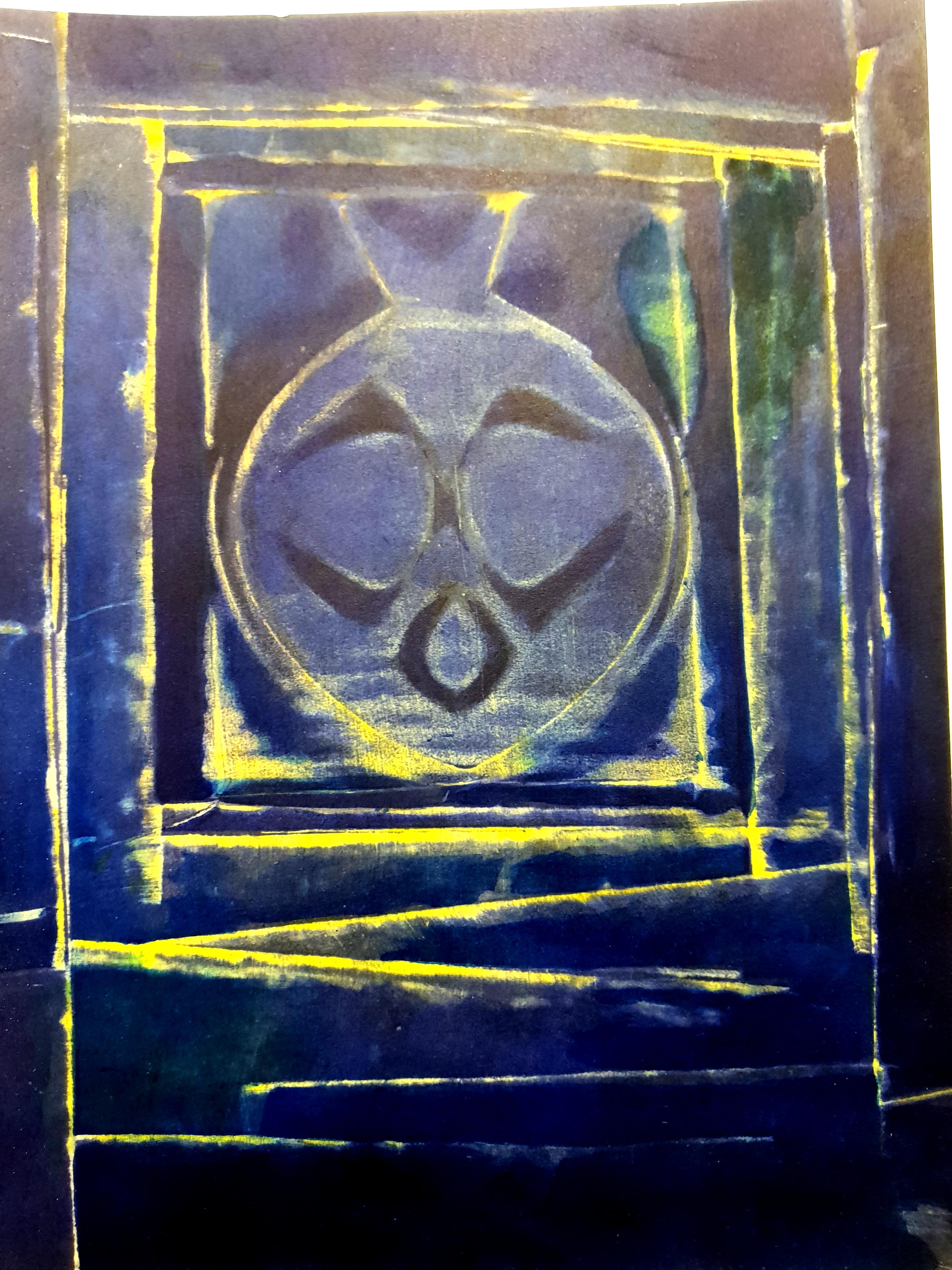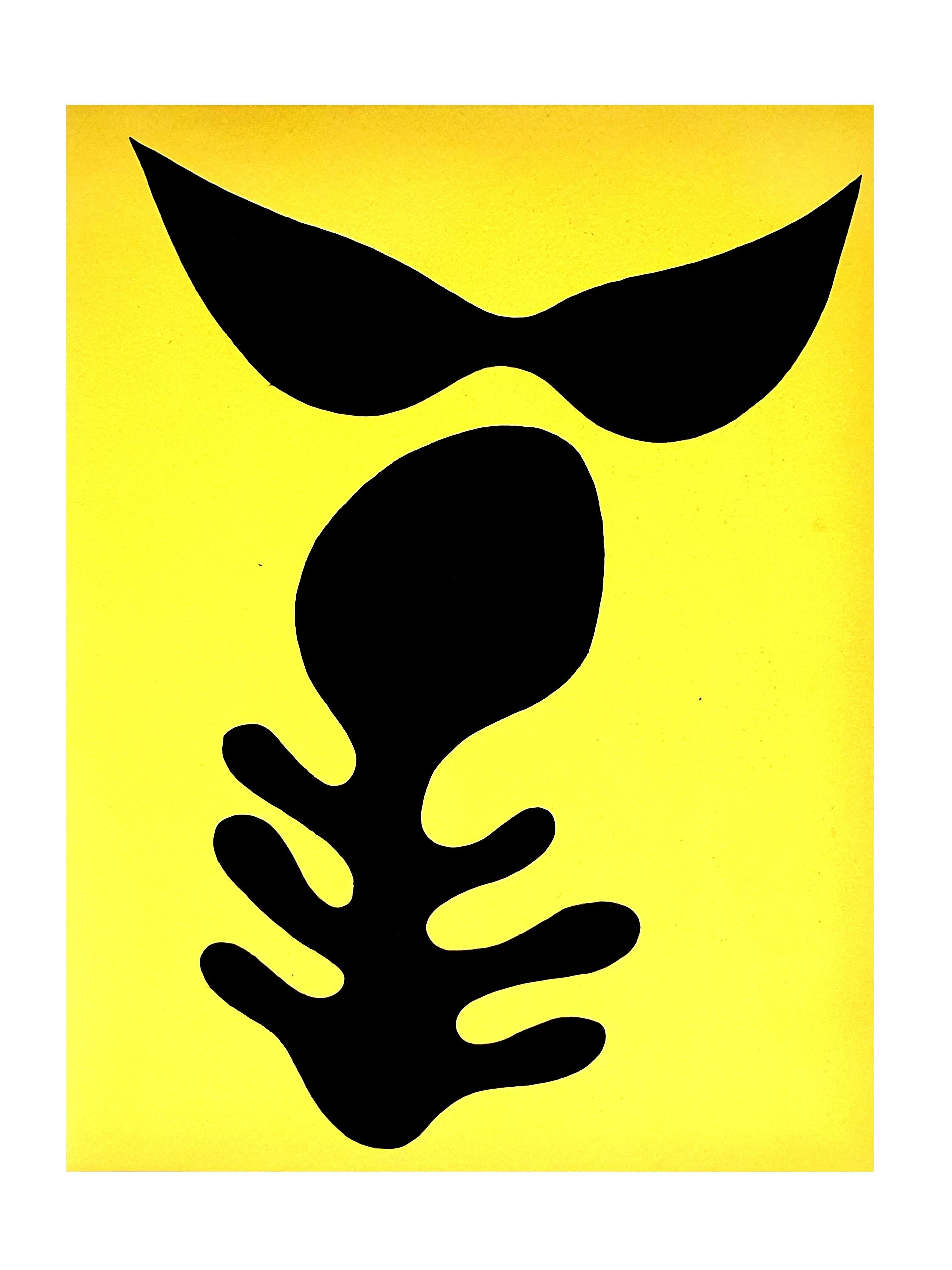Items Similar to Capricho de Goya n°7 - Héliogravure and Pochoir attr. to S. Dalì - 1977
Want more images or videos?
Request additional images or videos from the seller
1 of 7
Capricho de Goya n°7 - Héliogravure and Pochoir attr. to S. Dalì - 19771977
1977
About the Item
Capricho de Goya n°7 is an héliogravure and stencil, realized in 1977, hand-signed and numbered n°125/200. Published by Berggruen Paris in 1977.
Image dimensions: 21x15 cm.
Included a walnut frame.
In very good conditions.
This artwork is from Les Caprices de Goya of Salvador Dali, which consists of 80 original etching and aquatint. The Spanish master Francisco Goya created the work “Los Caprichos” early in the 18th century. Goya described the series as depicting “the innumerable foibles and follies to be found in any civilized society, and from the common prejudices and deceitful practices which custom, ignorance, or self-interest have made usual”
Ref. Michler-Lopsinger no. 854, p.252.
Prov.: Private Collection, Parma.
Salvador Dalí (1904-1989), Spanish-born Surrealist artist, known for his technical skill, skillful and the striking and bizarre images in his work. Dalí's artistic repertoire included painting, graphic arts, film, sculpture, design and photography, at times in collaboration with other artists. He also wrote fiction, poetry, autobiography, essays and criticism. Major themes in his work include dreams, the subconscious, sexuality, religion, science and his closest personal relationships. Heavily influenced by Sigmund Freud, the avant-garde style explored consciousness and dream-like states through exaggerated landscapes and bizarre or grotesque imagery.
- Attributed to:Salvador Dalí (1904 - 1989, Spanish)
- Creation Year:1977
- Dimensions:Height: 17.52 in (44.5 cm)Width: 12.21 in (31 cm)
- Medium:
- Movement & Style:
- Period:
- Condition:Insurance may be requested by customers as additional service, contact us for more information.
- Gallery Location:Roma, IT
- Reference Number:
About the Seller
4.9
Platinum Seller
These expertly vetted sellers are 1stDibs' most experienced sellers and are rated highest by our customers.
1stDibs seller since 2017
6,822 sales on 1stDibs
Typical response time: 3 hours
- ShippingRetrieving quote...Ships From: Rome, Italy
- Return PolicyA return for this item may be initiated within 14 days of delivery.
More From This SellerView All
- Capricho de Goya n°63 - Héliogravure and Pochoir attr. to S. Dalì - 1977By Salvador DalíLocated in Roma, ITCapricho de Goya n°63 is an original héliogravure and pochoir, realized by Salvador Dalí in 1977, hand-signed and numbered n°125/200. Included a wooden frame. In very good condi...Category
1970s Surrealist Figurative Prints
MaterialsStencil, Engraving
- Jonas and the Whale - Drypoint - 1975By Salvador DalíLocated in Roma, ITJonas and the whale is an artwork realized in 1975. Drypoint with pochoir on Arches paper, from the Series "Our Historical Heritage". Signed and numbered. Edition SA 51/300. Image 56x40cm - Sheet 66x50.5cm. Ref Michler/Löpsinger 759; Field 75-4 D. Prov. Private Collection France. Very Good condition. Salvador Dalí was an icon of Surrealism, the 20th-century avant-garde movement that sought to release unconscious creative potential through art that featured dreamlike imagery. Dalí's fantastical prints, paintings, sculptures, films, and writing helped cement the movement's identity. Working off psychoanalytic ideas, Dalí rendered fantastical creatures and landscapes that could unsettle and awe. His 1931 canvas The Persistence of Memory...Category
1970s Surrealist Figurative Prints
MaterialsDrypoint
- Principio de Incertidumbre de Heisenberg - Etching, Drypoint and Pochoir - 1977Located in Roma, ITEtching, Drypoint and Pochoir, 1977. Sheet 19 from the series Les Caprices de Goya de Dalì. Printed by J.J.J. Rigal after Goya with drypoint revisions by Dalí in his own hand between 1973 and 1977. Edition 85/200. Red. Michler-Löpsinger 866a (from b). Inscribed Dalì and Goya in pencil and with the artist's signature, title and number on the plate. On bold chamois-colored BFK Rives The Spanish master Francisco Goya created the work “Los Caprichos...Category
1970s Surrealist Figurative Prints
MaterialsEtching, Drypoint
- Femmes Poules (Hen Woman) - Etching - 1960sBy Salvador DalíLocated in Roma, ITFemmes Poules (Hen Woman) is an artwork realized in 1968/69, from the Series "Faust" (La Nuit de Walpurgis). Etching, Drypoint, Watercolor and Roulette on Japon Paper. Hand signed ...Category
1960s Surrealist Figurative Prints
MaterialsEtching, Paper, Watercolor, Drypoint
- Chevalier et la Mort (Knight and Death) - Etching - 1960sBy Salvador DalíLocated in Roma, ITChevalier et la Mort (Knight and Death) is an artwork realized in 1968/69, from the Series "Faust" (La Nuit de Walpurgis). Etching, Drypoint, Watercolor and Roulette on Japon Paper...Category
1960s Surrealist Figurative Prints
MaterialsPaper, Watercolor, Drypoint, Etching
- Le Buste - Etching - 1960sBy Salvador DalíLocated in Roma, ITLe Buste, from the Series "Faust" (La Nuit de Walpurgis), is an artwork realized in 1968/69. Etching, Drypoint, Watercolor and Roulette on Japon Paper. Hand signed and numbered. Ed...Category
1960s Surrealist Figurative Prints
MaterialsPaper, Watercolor, Drypoint, Etching
You May Also Like
- A Shattering Entrance upon the American Stage - orignal etching - signed - 1974By Salvador DalíLocated in Paris, FRSalvador Dali A Shattering Entrance upon the American Stage Original etching and stencil Handsigned in the right corner with the blind stamp of the editor in the left corner On B...Category
1970s Surrealist Figurative Prints
MaterialsStencil, Etching
- The Divine Love of Gala - orignal etching - signed - 1974By Salvador DalíLocated in Paris, FRSalvador Dali The Divine Love of Gala Original etching and stencil Handsigned in the right corner with the blind stamp of the editor in the left corner...Category
1970s Surrealist Figurative Prints
MaterialsStencil, Etching
- God, Time, Space, and the Pope - orignal etching - signed - 1974By Salvador DalíLocated in Paris, FRSalvador Dali God, Time, Space, and the Pope Original etching and stencil Handsigned in the right corner with the blind stamp of the editor in the left corner On BFK Rives vellum...Category
1970s Surrealist Figurative Prints
MaterialsStencil, Etching
- (after) Max Ernst - Blue Bird - StencilBy (after) Max ErnstLocated in Collonge Bellerive, Geneve, CHMax Ernst (after) - Blue Bird - Stencil Published in the deluxe art review, XXe Siecle, 1958 Dimensions: 32 x 25 cm Publisher: G. di San Lazzaro. Max Ernst was born in Bruhl, a place near Cologne, in Germany. He was raised in a strict Catholic family, and both of his parents were disciplinarians who were dedicated to training their children into God-fearing and talented individuals. Although his father was deaf, Ernst learned so much from him, particularly when it comes to painting. In fact, much of his early years were lived under the inspiration of his father who was also a teacher. He was the one who introduced painting to Ernst at an early age. In 1914, Ernst attended the University of Bonn where he studied philosophy. However, he eventually dropped out of school because he was more interested in the arts. He claimed that his primary sources of interest included anything that had something to do with painting. Moreover, he became fascinated with psychology, among other subjects in school. Primarily, Ernst's love for painting was the main reason why he became deeply interested with this craft and decided to pursue it later on in his life. During his early years, he became familiar with the works of some of the greatest artists of all time including Claude Monet, Paul Cezanne and Vincent van Gogh. He was also drawn to themes such as fantasy and dream imagery, which were among the common subjects of the works of Giorgio de Chirico. During World War I, Ernst was forced to join the German Army, and he became a part of the artillery division that exposed him greatly to the drama of warfare. A soldier in the War, Ernst emerged deeply traumatized and highly critical of western culture. These charged sentiments directly fed into his vision of the modern world as irrational, an idea that became the basis of his artwork. Ernst's artistic vision, along with his humor and verve come through strongly in his Dada and Surrealists works; Ernst was a pioneer of both movements. It was Ernst's memories of the war and his childhood that helps him create absurd, yet interesting scenes in his artworks. Soon, he took his passion for the arts seriously when he returned to Germany after the war. With Jean Arp, a poet and artist, Ernst formed a group for artists in Cologne. He also developed a close relationship with fellow artists in Paris who propagated Avant-Garde artworks. In 1919, Ernst started creating some of his first collages, where he made use of various materials including illustrated catalogs and some manuals that produced a somewhat futuristic image. His unique masterpieces allowed Ernst to create his very own world of dreams and fantasy, which eventually helped heal his personal issues and trauma. In addition to painting and creating collages, Ernst also edited some journals. He also made a few sculptures that were rather queer in appearance. In 1920s, influenced by the writings of psychologist Sigmund Freud, the literary, intellectual, and artistic movement called Surrealism sought a revolution against the constraints of the rational mind; and by extension, they saw the rules of a society as oppressive. Surrealism also embraces a Marxist ideology that demands an orthodox approach to history as a product of the material interaction of collective interests, and many renown Surrealism artists later on became 20th century Counterculture symbols such as Marxist Che Guevara. In 1922 Ernst moved to Paris, where the surrealists were gathering around Andre Breton. In 1923 Ernst finished Men Shall Know Nothing of This, known as the first Surrealist painting. Ernst was one of the first artists who apply The Interpretation of Dreams by Freud to investigate his deep psyche in order to explore the source of his own creativity. While turning inwards unto himself, Ernst was also tapping into the universal unconscious with its common dream imagery. Despite his strange styles, Ernst gained quite a reputation that earned him some followers throughout his life. He even helped shape the trend of American art during the mid-century, thanks to his brilliant and extraordinary ideas that were unlike those of other artists during his time. Ernst also became friends with Peggy Guggenheim, which inspired him to develop close ties with the abstract expressionists. When Ernst lived in Sedona, he became deeply fascinated with the Southwest Native American navajo art. In fact, the technique used in this artwork inspired him and paved the way for him to create paintings that depicted this style. Thus, Ernst became a main figure of this art technique, including the rituals and spiritual traditions included in this form of art. Pollock, aside from the other younger generations of abstract expressionists, was also inspired by sand painting of the Southwest...Category
1950s Surrealist Animal Prints
MaterialsStencil
- after Jean Arp - Moustaches et Squelette - PochoirBy Jean ArpLocated in Collonge Bellerive, Geneve, CHafter Jean Arp Moustaches et Squelette Executed in 1957 after the original artwork by the studios from Daniel Jacomet in Paris, France Pochoir Dimensions: 32 x 24 cm From the art re...Category
1950s Surrealist Abstract Prints
MaterialsStencil, Paper
- Analysis of Various Evils - Lithograph and StencilBy (after) Paul KleeLocated in Paris, FRPaul KLEE (after) Analysis of Various Evils Lithograph and stencil (Jacomet process) Printed signature in the plate On canson vellum 50 x 38.2 cm (19.6 x 14.9 in) INFORMATION : Thi...Category
Early 20th Century Surrealist Figurative Prints
MaterialsStencil, Lithograph


